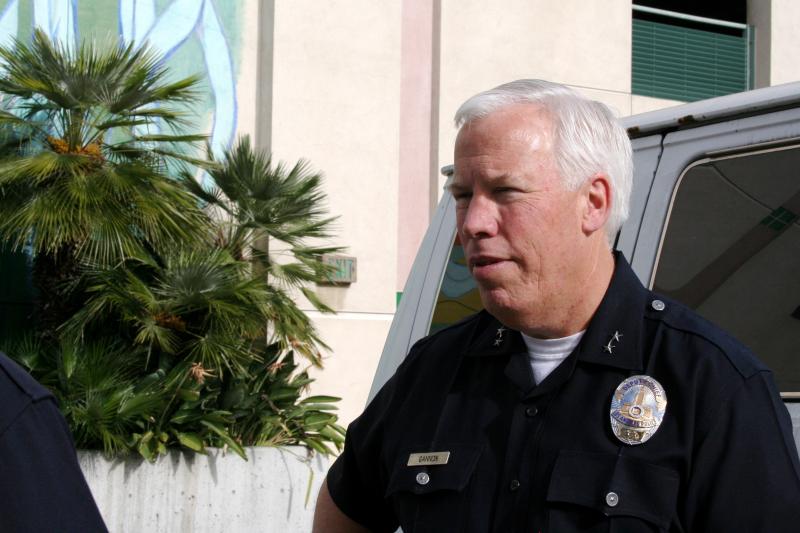LAPD: 'We Have A Strong Case' Against Suspects In USC Shooting

Bryan Barnes, 20, and Javier Bolden, 19, were taken into custody following a month-long investigation by the Los Angeles Police Department in collaboration with the FBI and USC’s Department of Public Safety.
According to reports, Barnes was arrested inside a house on the 1200 block of 91st Street by a SWAT team accompanied by plainclothes officers and detectives. Bolden was arrested three hours later in Victorville. He was later flown by helicopter to the LAPD’s 77th Street station.
Eyewitnesses reported the arrests Friday were carried out calmly, quietly. It was with a similar sense of measured certainty Deputy Chief Pat Gannon spoke by phone Saturday.
“We have a very strong case,” Gannon said. The department has been working to solve the murders of Wu Ying and Qu Ming, two electrical engineering students who were killed last month just off-campus.
The case has brought to the forefront concerns about safety in the community. As public pressure has steadily increased to find the perpetrators, the investigation hasn’t been easy for the LAPD.
“The difficulty is, you know, it happens late at night,” Gannon said, thinking back to the scene of the crime that Wednesday morning. “It’s raining cats-and-dogs, and there’s nobody out. There are shots heard—some people look out their windows. They see a person running away from the BMW that Ying and Ming were in. They see Ming stagger out of the car and onto the porch across the street and then collapse. And then there’s a couple witnesses that see a dark-colored vehicle that drives away very quickly from the area. That’s all we had.”
Gannon said despite the rain, investigators were able to salvage some physical evidence from the scene to send out for forensic analysis. “That information came back that tied that crime to two other attempted murder investigations—one in February of this year and another one in November of last year.”
The district attorney has requested that the LAPD hold off on releasing those details until the cases are filed. The office said it will file on Tuesday, the same day Barnes and Bolden are scheduled to be arraigned. According to Gannon, both of the earlier murder attempts happened late at night, after parties—circumstances similar to the April shootings.
“Some work had been done,” Gannon said of the cases. “There were witnesses to those crimes that we didn’t have in the student murder investigation. So we began to work this case backwards, thinking that if we made progress on those cases, it might lead us back to the individual—or individuals—responsible for Ying and Ming’s case. That was really the first break we had.”

That assumption is somewhat backed up by the stolen property recovered from Barnes—Ying’s cell phone.
Gannon pointed out that information had not been intentionally released by the LAPD, but didn’t deny the findings reported by The Los Angeles Times. “We just linked that together earlier this week,” he said.
Gannon also said there was little possibility Barnes had come across the property by other means—the cell phone sold to him by the real killer, for example. “That’s something that we considered along the way,” he said. “However, this is highly based upon the physical evidence that was left at the scene that linked him to these other crimes. And in the other crimes we have positively identified him.”
The deputy chief said further evidence linking Barnes to the April shooting, gathered with a “strong use of technology,” would be released later this week. “Every piece of this investigation will eventually come out,” Gannon said. “I mean, in court, it has to. We have to be upfront. But I’d rather it come out in court. The crooks read sometimes.”
Chief Charlie Beck made clear during a news conference Friday that neither of the suspects was a confirmed gang member. Gannon corroborated, saying the two men were not in the department’s gang files, though both have links to two different groups—one based in Watts and the other further west of USC’s campus in the Crenshaw area near Coliseum Street. But neither of the suspects lives in or frequents those neighborhoods.
“This appears to be just a crime of opportunity,” Gannon said. “When that car was double-parked on the street, late at night, the flashers on—I believe it drew attention. That may have been why they targeted it, but not because they prey on people in that particular area. That’s not the impression we’re getting through the investigation.”
Gannon’s assurance may ease some of the safety concerns of the community surrounding USC’s South L.A. campus. But he said the arrests wouldn’t change plans announced in late April to assign 30 additional officers to the nearby Southwest Division. That deal goes into effect Monday, under a contract continuing through the next school year.
“We’re committed to making the area around the campus as safe as we possibly can,” he continued. “The renewed, enhanced effort that we have occurring now, it isn’t just about patrolling 30 new officers. It’s more about coordinating and collaborating—solving problems and developing partnerships. That’s the key to this effort.”
For Gannon, underscoring these measures to keep the neighborhood safe is a hope that other parents can avoid the loss suffered by Wu Ying and Qu Ming’s families.
“You know, my kids—we worried about sending ‘em off to college. This isn’t an issue unique to USC,” he said. “It’s just a matter of working together.”
Reach Editor-in-Chief Catherine Green here. Follow her here.



